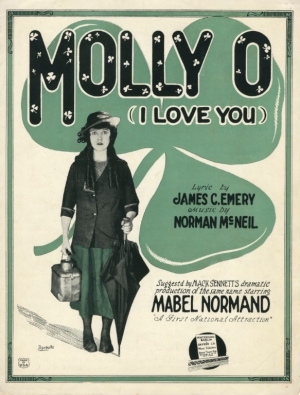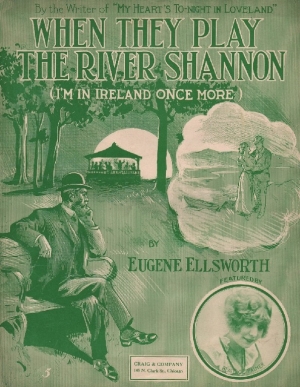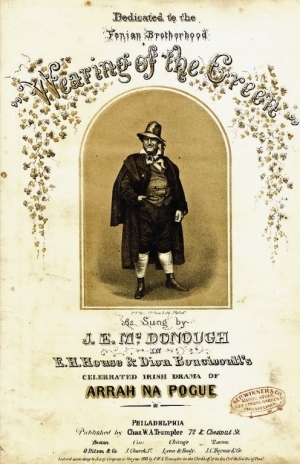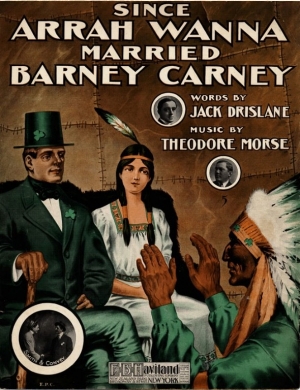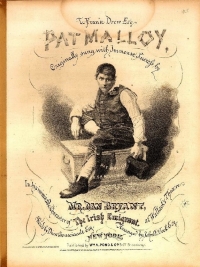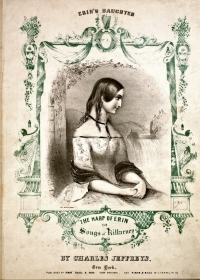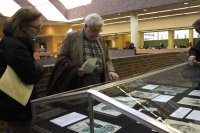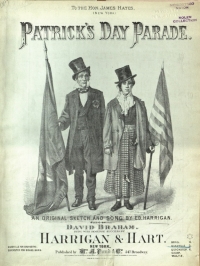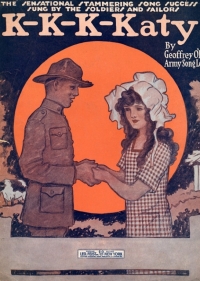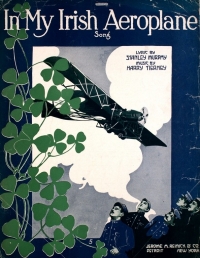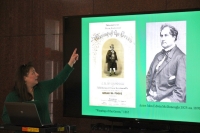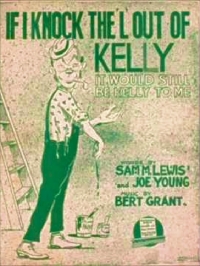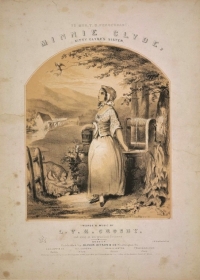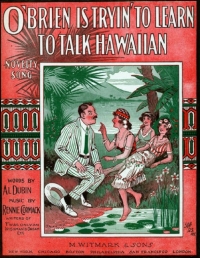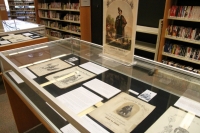Ahead of St. Patrick’s Day, UC art historian Theresa Leininger-Miller helps bring in the green this March with an exhibition at the downtown public library on American sheet music covers, in particular those that depict Irish and Irish-American culture.
Her exhibition and presentation illustrate how art and material culture helped reflect society’s values for 85 years — from 1840 to 1925. The exhibition is on display through March 29.
By Melanie Schefft
Photos courtesy of the Public Library of Cincinnati and Hamilton County
St. Patrick’s Day gets a special kickoff this year with an exhibition, “The Wearing of the Green: Irish Identities in American Illustrated Sheet Music, 1840-1925,” at the main branch of the Public Library of Cincinnati and Hamilton County (PLCHC).
University of Cincinnati’s Theresa Leininger-Miller, associate professor of art history in the College of Design, Architecture, Art, and Planning (DAAP), researched and assembled the unique collection of works that celebrates St. Patrick’s Day by examining the ways in which illustrators, composers and lyricists have envisioned Irish and Irish-ugeAmerican identities in sheet music.
Included in the exhibition are 32 compositions of colorful and detailed music covers. The exhibition is displayed on three floors of the library and runs from February 11 through March 29.
Leininger-Miller will present a public lecture about the exhibition at 7 p.m., Monday, March 23, in the community meeting room at the Symmes Township Library, 11850 Enyart Rd. in Loveland, Ohio. The talk also will include half a dozen performances of compositions on video.
According to Leininger-Miller, in the late 19th and early 20th centuries, song lyrics and their illustrated sheet music covers most often explored urbanity, upward mobility and material success, as well as the harsh realities of daily life. Romance, World War I and nostalgia for the beauty, rural simplicity and family connections of Ireland are among other common references that can be seen.
The art on the covers also occasionally signifies the application of characteristics and stereotypes by others — primarily the dominant Protestant, Anglo-American bourgeoisie (middle class) -- which could be affectionate, humorous or deprecating. In this colorful collection, Gaelic names, shamrocks, shillelaghs, caubeens (Irish berets), clay smoking pipes and harps abound.
